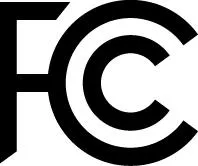News
FCC Report: Cable subscriptions decrease as prices rise

Last week the Federal Communications Commission (FCC) released its annual report on video competition. The report highlighted some fascinating developments:
- More than one-third of U.S. homes -- or 46.4 million households -- can now get video service from what we used to call a “telephone” company. AT&T’s U-Verse video is now available to 27 million households, while Verizon’s FiOS video is available to 18.6 million homes.
- Overall, pay TV subscriptions declined for the first time in history. As the report notes: “All of the decrease” came from cable company subscriptions, “which fell from 56.4 million to 54.5 million.”
- The cost of video service continues to increase. Average price for basic service went up 6.5 percent last year.
- Online video distributors (OVDs) continue to challenge video providers as the industry evolves and expands. Nielsen attributes the television penetration drop from 99 to 96 percent of US households to “cord-cutters,” or viewers of Internet only video services, such as Netflix.
- Advertising continues to move online. Internet advertising now accounts for almost 20 percent of local advertising revenue, second only to daily newspapers. Broadcast TV stations account for about 15 percent of local advertising revenue, radio accounts for about 16 percent, and cable accounts for about 7 percent.
While cable continues to dominate today’s video marketplace, Internet video streaming and new entrant former telephone companies are disrupting the traditional video sector.
FCC Video Competition Report (FCC, Apr. 2015)
CWA members oppose AT&T’s attempts to stop serving rural and low-income communities in California
News
CWA members oppose AT&T’s attempts to stop serving rural and low-income communities in California
CWA members oppose AT&T’s attempts to stop serving rural and low-income communities in California
CWA urges FCC to deny industry attempts to loosen pole attachment standards
News
CWA urges FCC to deny industry attempts to loosen pole attachment standards
CWA urges FCC to deny industry attempts to loosen pole attachment standards
CWA District 6 reaches agreement with AT&T Mobility
News
CWA District 6 reaches agreement with AT&T Mobility
CWA District 6 reaches agreement with AT&T Mobility



